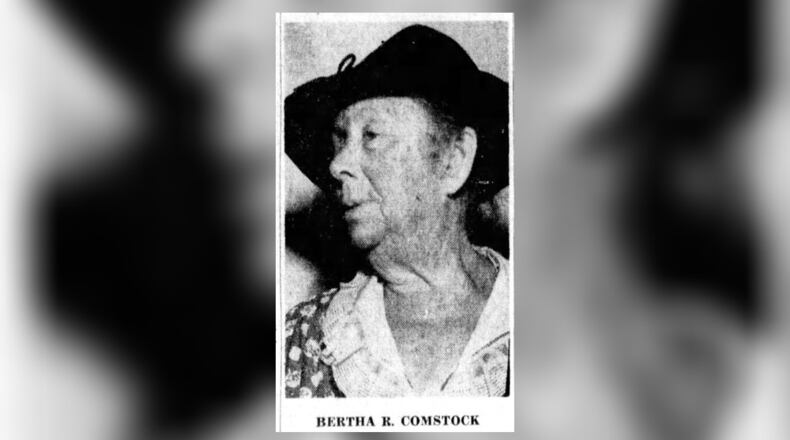Getting the scoop
Comstock covered society, women’s clubs, men’s clubs, fires, general police news and special assignments.
Born on Hawthorn Street, near the home of the Wright Brothers, Comstock rode a bicycle daily, foregoing the use of streetcars or horse-drawn cabs.
She had her bicycle regularly repaired by Orville and Wilbur Wright. In fact, they added an acetylene lamp for nighttime reporting.
Comstock was eventually given the job of organizing the newspaper’s rural correspondents.
“I got news from every farmers’ club and farm organizations,” she once said. “There was a big fight about stock inspection, and a demonstration was arranged to convince the farmers of the importance of inspection.
“A healthy pig and a diseased pig were taken to the meeting, and a post-mortem was performed on the diseased pig. I was right there and wrote the story about it.”
Comstock served in an all-around capacity for many years. Her reporting ran the gamut of local news from afternoon teas to murders.
In addition to her reporting duties, she did a great deal of research work on Dayton history.
Curious byline
In the late 1800s when Comstock began her newspaper career she wrote under the name of George K. Roemer.
“Women reporters were unheard of when I started.” Comstock said, “so used a man’s name.”
Teamwork helped keep up the fiction:
“When I was writing polities, someone would come in and say, ‘I want to see that fellow George Roemer.’ The city editor would turn to me and say, ‘Miss Comstock, do you know where George is?’”
“Then I would tell the visitor, ‘I don’t know when he’ll be back, but he said if anything came up, I should take care of it.’”
Social worker
Being a naturally curious person, Comstock early in her reporting career obtained a wealth of social welfare information.
Because of that, judges turned many delinquent and predelinquent children over to her, especially about the time she was campaigning for a needed “housecleaning” at the old county children’s home on South Summit Street.
Comstock had as many as 65 juveniles under her watch, all of whom she enrolled in the Sunday school class she taught at the old Williams Street Baptist church.
Move to Florida
After 14 years of newspaper work, Comstock moved with her parents and siblings to Florida, in 1910. They settled on a farm in Allapattah in Dade County.
Comstock Elementary School now stands on part of the farm site.
The school is named for her father, John T. Comstock, who was a member of the school board in Dayton and started manual training, adult education and night schools there.
Miss Comstock continued to write in Miami for the U.S. Work Projects Administration, Federal Writers’ Project.
Return visit to the Journal
In 1945, Comstock returned to Dayton and The Journal office “to look things over.” By this time, she had been living in Miami for 35 years was was 75 years old.
During the visit Comstock said she got into newspaper work because her Sunday school teacher was city editor of a newspaper in Dayton.
“I began writing neighborhood news, church news and agricultural news,” she said.
“We had a famous interviewer on the paper, and I used to trot along behind him to take down in shorthand what his subjects said.
“While he was ill, I substituted for him, and first thing you know I was getting all the interviews.”
Comstock was the first reporter here to use stenography (such as used in court reporting to create official transcripts) in covering assignments.
At the time of her death in 1959, Comstock was living in Coconut Grove, Florida, and newspapers reported that she was working to have a so-called Civil War cannon removed from in front of the Dayton courthouse. Comstock claimed she had records to prove that it came from Havana and had nothing to do with the War Between the States.
About the Author


